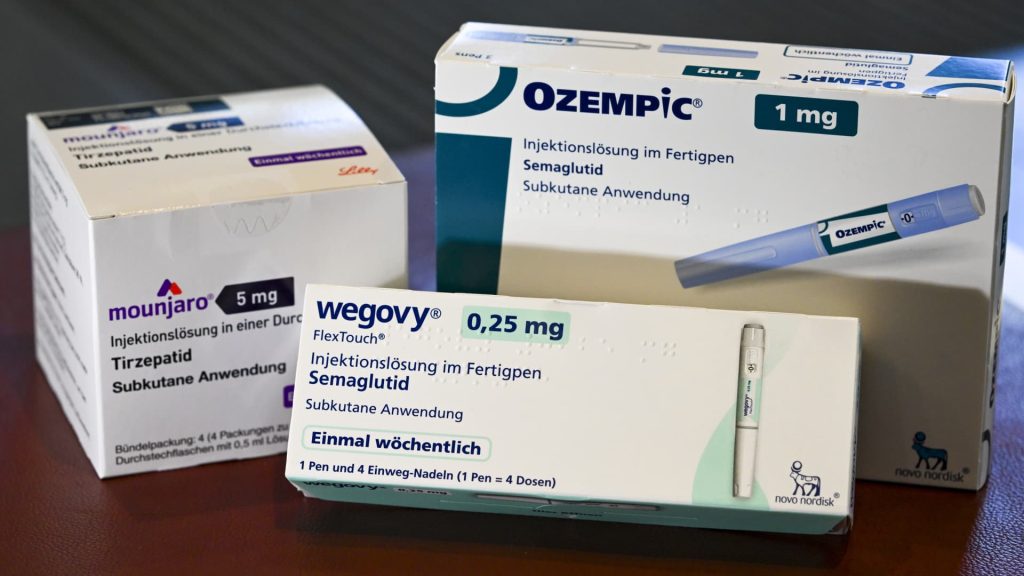The increasing prevalence of diabetes and weight management drugs such as Mounjaro, Ozempic, and Wegovy is reshaping the landscape of health costs for large employers. As these GLP-1 medications gain widespread usage, employers are faced with the concern of whether the high price tag will yield substantial benefits over time, both in terms of employee health and financial savings. Recent analyses by Aon have provided insights that could indicate a positive shift in this regard.
| Article Subheadings |
|---|
| 1) Significant Health Outcomes from GLP-1 Medications |
| 2) Analysis of Medical Costs Over Time |
| 3) The Financial Impact on Employers |
| 4) Implementation of GLP-1 Programs by Aon |
| 5) Future Implications for Healthcare and Employers |
Significant Health Outcomes from GLP-1 Medications
The growing use of GLP-1 medications has shown promising health outcomes, particularly for those suffering from chronic conditions like obesity and type 2 diabetes. According to Aon’s recent studies, patients engaging in therapy with Mounjaro, Ozempic, and Wegovy have experienced significant improvements in their health metrics. Notably, there was a reported 44% reduction in major cardiovascular events among these patients, as highlighted by Aon’s CEO, Greg Case. Furthermore, reductions in various health issues, such as osteoporosis and pneumonia, underline the holistic benefits of GLP-1 therapy, contributing to healthier outcomes for employees.
Analysis of Medical Costs Over Time
In assessing the financial trajectory associated with GLP-1 medication usage, Aon compiled extensive medical claims data from approximately 139,000 employees across the U.S. who began treatment between 2022 and 2024. The findings indicated a steep rise in medical expenses during the initial year of treatment, attributed to comprehensive doctor visits aimed at managing both the medication regimen and underlying health issues related to obesity, such as sleep apnea and gastroesophageal reflux. However, as treatment progressed, the trend shifted: by the end of the second year, the average medical cost trend for those utilizing GLP-1 drugs slowed by approximately 7% compared to their counterparts not on the medication. This crucial data suggests that while upfront costs might increase, long-term benefits could lead to considerable savings.
The Financial Impact on Employers
Despite the high list price exceeding $1,000 per dose, the substantial reduction in medical costs related to severe health outcomes has led some analysts to draw favorable conclusions about the financial implications for employers. GLP-1 medications have surged ahead as a leading factor in rising drug costs since the beginning of 2023, outpacing traditional specialty medications used for chronic diseases. Notably, Aon’s findings showed a stark contrast in the cost trends: those who did not engage with GLP-1 therapy faced a medical cost trend of 14%, while those who did experienced far healthier cost trends. According to the data, the most pronounced savings were attributed to decreased occurrences of major cardiac events, which are often financially devastating.
Implementation of GLP-1 Programs by Aon
In light of these promising findings, Aon has rolled out an innovative subsidized GLP-1 weight management program targeting their own workforce. This initiative includes regular virtual wellness consultations and home blood-testing kits designed to enhance adherence to the prescribed treatment plans. As Case noted, Aon aims to leverage this program not only to improve employee health but also to further emphasize the potential for an economic return on investment that employers might see by facilitating coverage for these drugs.
Future Implications for Healthcare and Employers
Looking ahead, the implications of the increasing uptake of GLP-1 medications are extensive. With ongoing research and data collection, both employers and healthcare providers may glean more insights into how such therapies can reshape not only individual health trajectories but also broader healthcare expenditures. As the healthcare landscape continues to evolve, the integration of weight management medications like GLP-1s could signify a shift toward preventative care, prioritizing health before it deteriorates into chronic diseases. Aon’s presentation at the upcoming Milken Institute Global Conference is expected to unveil further findings that may help shape the conversations around the economics of health and the role of these advanced therapies.
| No. | Key Points |
|---|---|
| 1 | GLP-1 medications have shown significant health improvements for chronic conditions. |
| 2 | The initial rise in medical costs can lead to substantial long-term savings. |
| 3 | The correlation between GLP-1 therapy and reduced major health events is significant. |
| 4 | Aon has initiated a subsidized GLP-1 program to enhance employee well-being. |
| 5 | The future of healthcare may prioritize preventative measures through these therapies. |
Summary
In conclusion, the rising adoption of GLP-1 medications signifies a transformative era in employee health management and overall healthcare costs. As data reveals both health benefits and potential cost savings, employers are likely to reconsider their strategies in providing health insurance coverage for these medications. The journey to substantially improve health outcomes while tightening fiscal resources will be paramount for sustaining effective workplace health programs.
Frequently Asked Questions
Question: What are GLP-1 medications?
GLP-1 medications are a class of drugs used to treat type 2 diabetes and assist with weight loss by mimicking the incretin hormone that helps to regulate glucose levels.
Question: How do GLP-1 medications reduce health risks?
GLP-1 medications have been shown to reduce the risk of major cardiovascular events and other health complications associated with obesity and diabetes through improved metabolic health.
Question: What impact do GLP-1 therapies have on healthcare spending?
While there is an initial increase in medical expenses due to increased doctor visits and monitoring, studies have indicated long-term reductions in healthcare costs due to fewer major health incidents.
